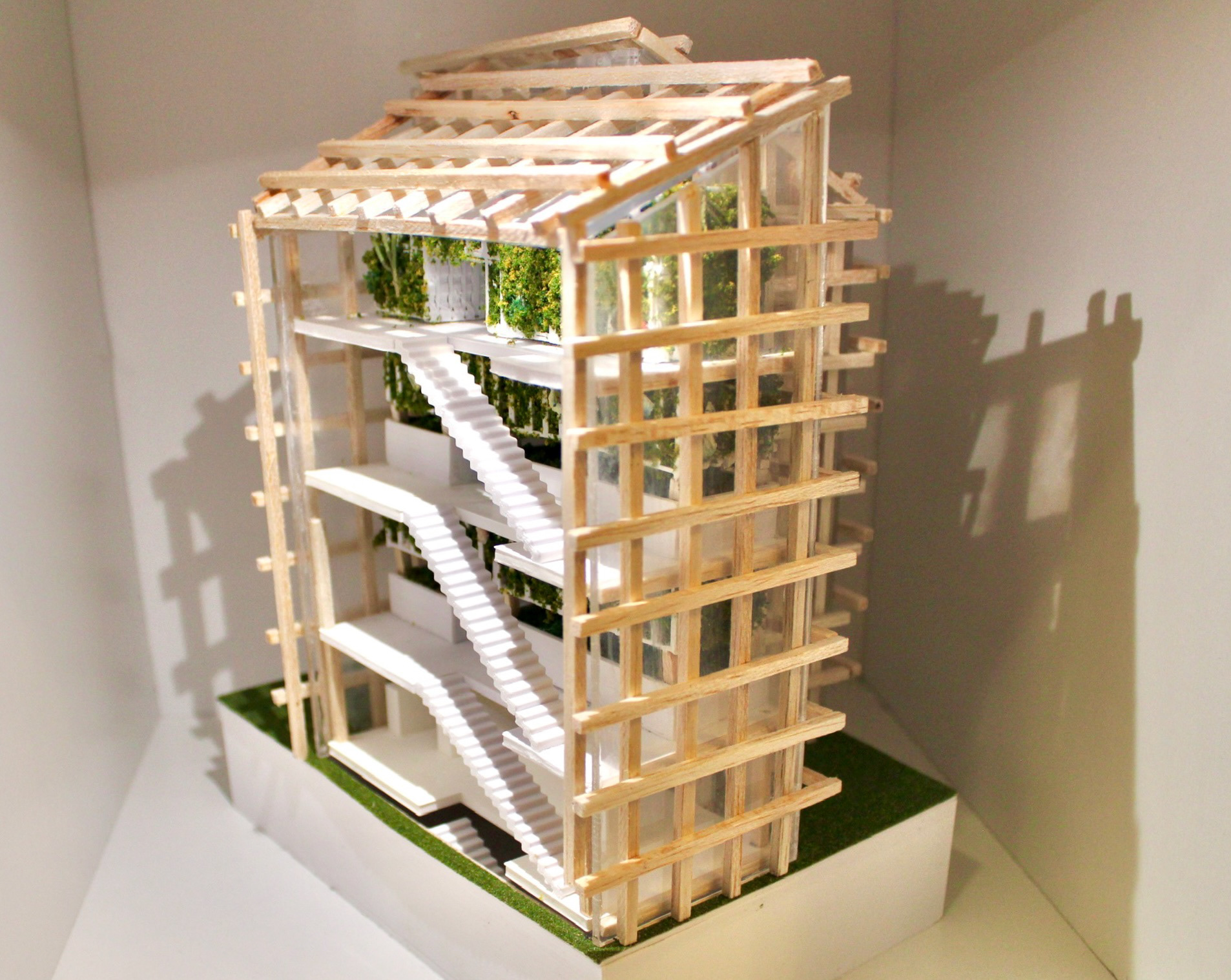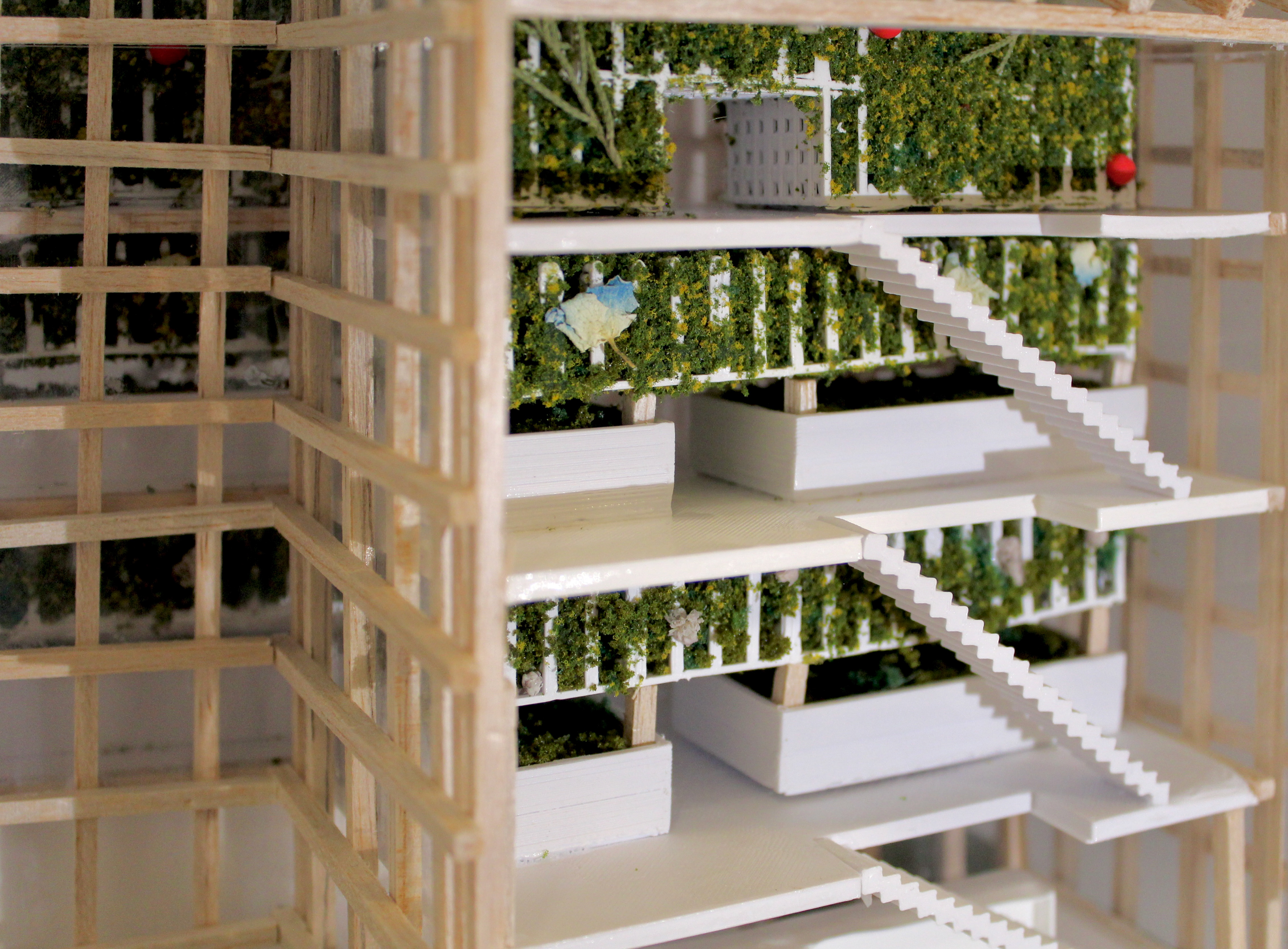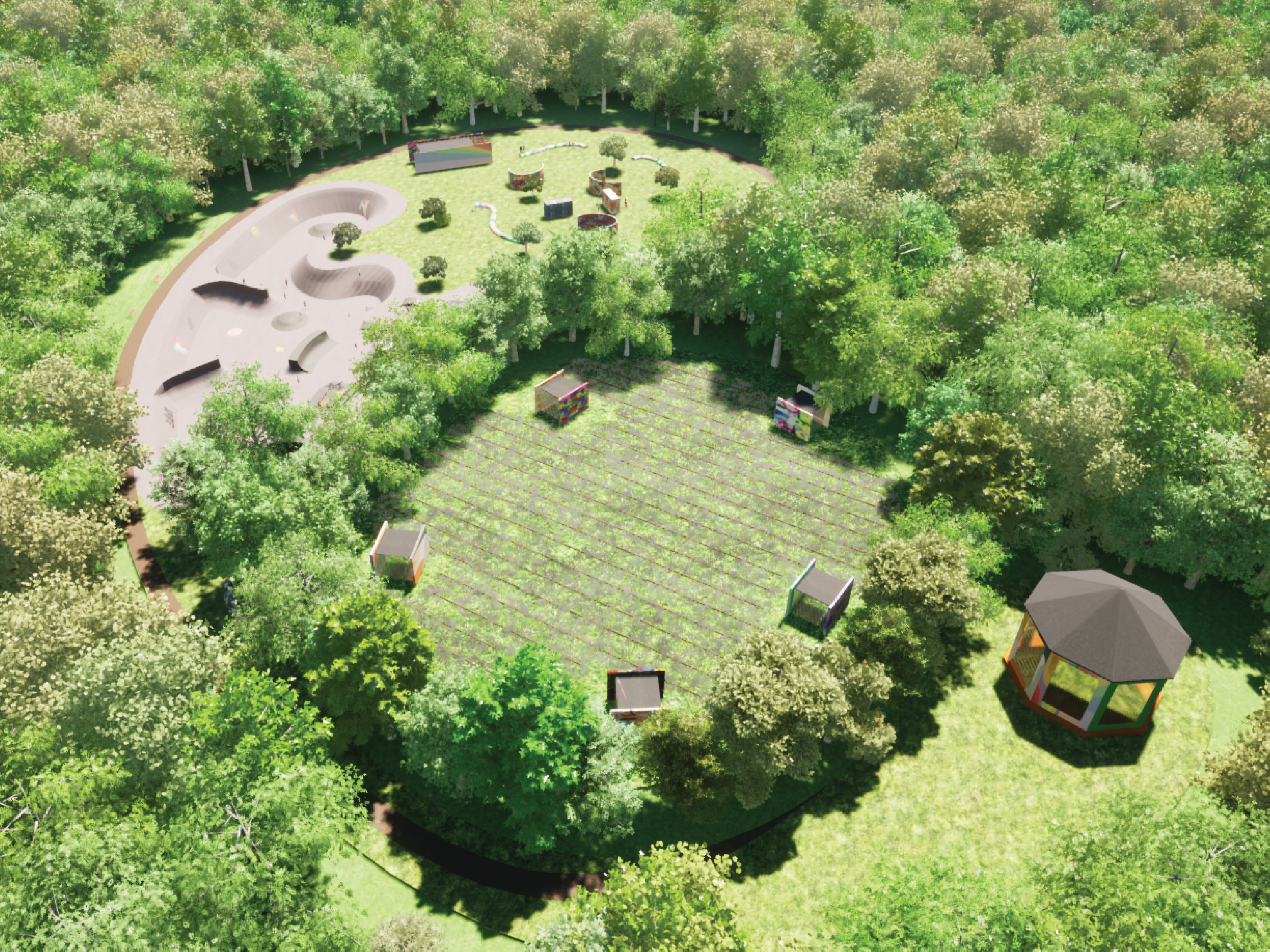This semester, I designed a multi-story greenhouse to address food insecurity in Boston’s local neighborhood, Roxbury. Research shows that Roxbury doesn’t have easy access to fresh local food; the Vertical Growhouse is a sustainable distribution center aimed to feed the local community. The greenhouse is five stories and focuses on vertical farming utilizing hydroponics and aquaculture as methods of food production. Hydroponics is the technique of growing plants using a water-based nutrient solution rather than soil. Vertically stacked layers enable plants to grow in larger quantities compared to typical soil farming. Each floor is categorized by such, with a basement dedicated to fungi and food that grow in low-light conditions. There are also several storage “pantries” that cater to specific produce humidity levels after harvesting in order to elongate the preservation of the fruit/vegetable. The site plan illustrates how the greenhouse acts as a distributor to other parts of the community. The distribution path highlighted is a
The nourishment center was designed by my classmate, Eva Poon. It acts as a resource center for the community, where food from the greenhouse is supplied. Compost from the Nourishment Center is given back to the greenhouse for its compost pile.
The nourishment center was designed by my classmate, Eva Poon. It acts as a resource center for the community, where food from the greenhouse is supplied. Compost from the Nourishment Center is given back to the greenhouse for its compost pile.


